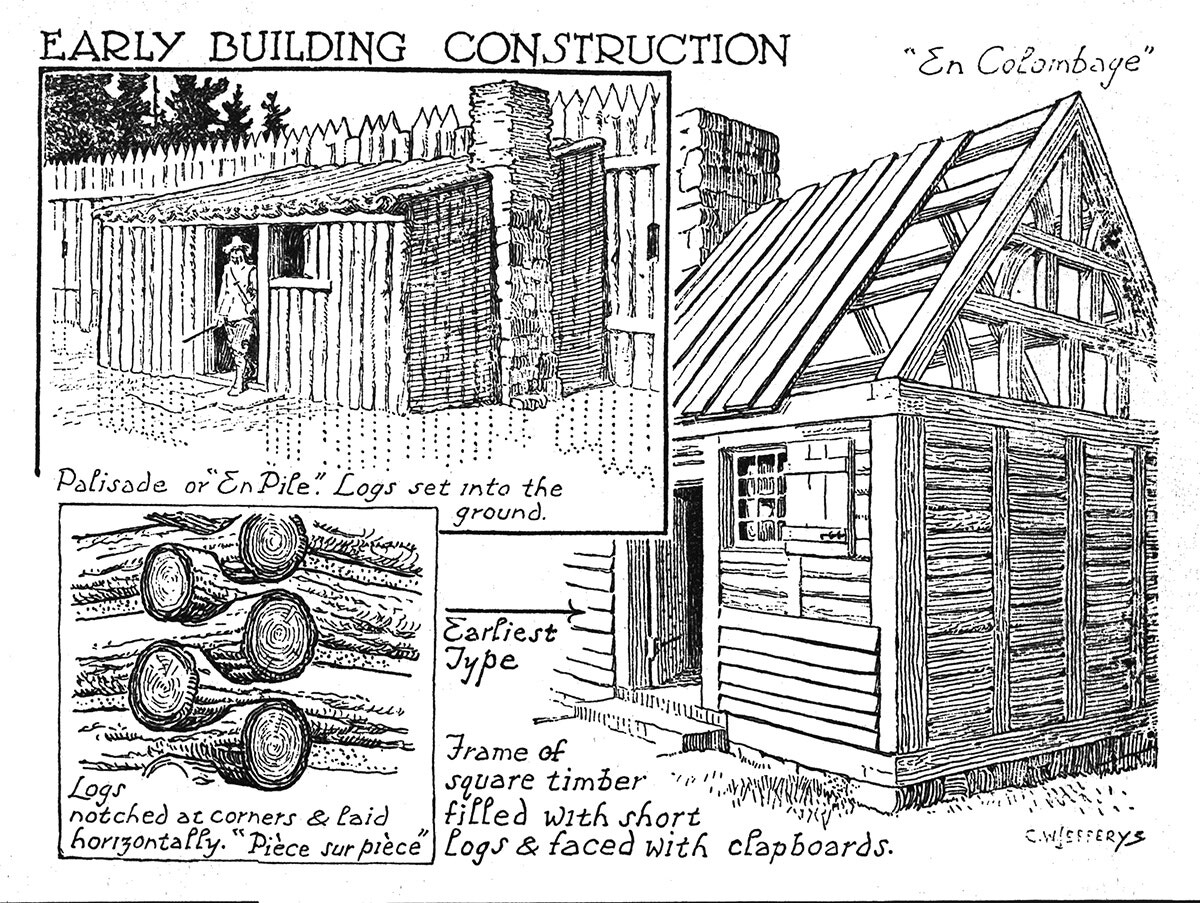Early Building Construction
Credit: Library and Archives Canada, Acc. No. 1972-26-731
Remarks
C.W. Jefferys' notes about this picture from The Picture Gallery of Canadian History Volume 1
The earliest buildings erected in North America by white men were of wooden frame construction, similar to those of the districts of Europe from which they came. The first settlements in Acadia, Virginia, Canada and New England were made by colonization companies or associations which employed expert masons, carpenters, etc., who brought to this continent the traditional methods of their craft in their homelands. None of these first houses exists today.
The pioneer log house or cabin was not in general use until well into the eighteenth century, since it was not known in England or France. It is possible that the Swedish colonists on the Delaware first introduced it, as such houses were common in Scandinavian countries. Before the end of the seventeenth century, however, defensive blockades and heavy log blockhouses were erected in outlying frontier settlements by both French and English colonists, and, as we have seen, the Huron-Iroquois villages were surrounded by palisades.
In early records of the French regime we find references to various forms of construction, not only for houses, but for the first churches. "En Colombage" indicated a frame of squared timbers, filled in between the uprights with short thick logs, or with stones and mortar, or with clay. This was similar to the "half-timber" buildings of southern England and northern France. "Piece sur piece" signified a building made of squared timbers or round logs laid horizontally and notched together at the corners; the familiar log-house construction. Both these types were covered on the outside by clap-boards, or by a coat of plaster, and sheathed inside with sawn planks. "En pile" meant a building made by planting logs upright in a trench close together, as in a palisade, to form the walls.
Stone houses, however, were built in the early days of French settlement, and this type of building is prevalent throughout rural Quebec today.
For further details on building see the pages on stone and wooden houses, early churches, and roofs and chimneys. Valuable information and many illustrations of early Canadian building may be found in Old Houses, Old Manors, and in Old Churches, published by the Historic Monuments Commission of the Province of Quebec, and in several brochures by Professor Ramsay Traquair, published by McGill University, Montreal. Consult also The Log Cabin Myth, by Harold R. Shurtleff, Harvard University Press, Cambridge, Mass., and Domestic Architecture of the American Colonies, by Fiske Kimball.
Published References
- Jefferys, Charles W. 1942 The Picture Gallery of Canadian History Volume 1, p.82




Comments